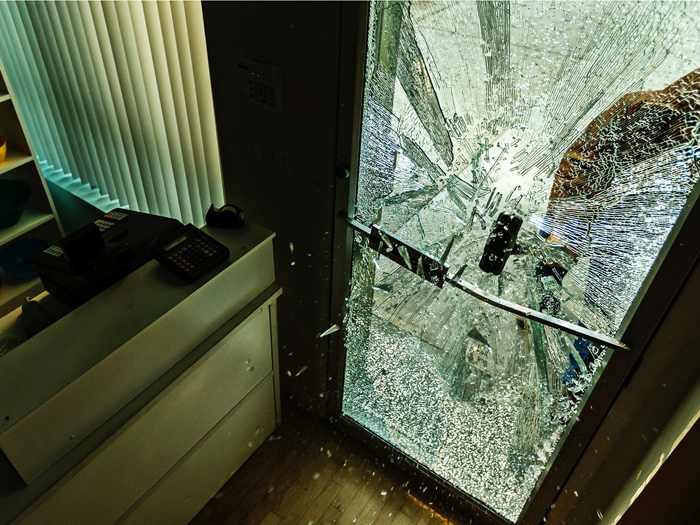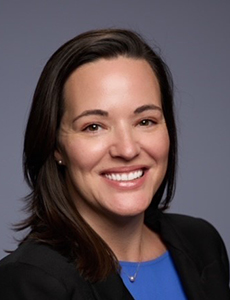Reed Hanoun and Dr. Jake Lazarovic of 3motionAI Talk Data, Technology and Their Role in Protecting Workers

This spring, Risk & Insurance® caught up with Reed Hanoun, CEO, 3motionAI, and the company’s chief medical officer, Jake Lazarovic, MD. What follows is a transcript of that discussion, edited for length and clarity.
Risk & Insurance: What inspired the formation of 3motionAI, and how has the company evolved over time?
Reed Hanoun: 3motionAI was initially formed under the name MyAbilities to address ergonomics and job analysis in the workplace. We developed software solutions to help employers understand the demands of the jobs they were asking workers to perform, providing digital job profiles to automate and advance the traditional manual process.
During the COVID-19 pandemic, we shifted our focus to leveraging human performance in sports, particularly in baseball. We worked with advanced athletes at the MLB level, helping them optimize their physical performance and minimize the risk of musculoskeletal injuries. Our products were successfully deployed in MLB teams, colleges, universities and high schools.
Post-COVID, we determined that our technology could be applied to help workers perform their jobs safely and comfortably and shifted our focus from assessing the job to assessing the employee. We repackaged our sports technology as a risk mitigation solution, assessing how employees function and move to determine their likelihood of injury over time.
Dr. Jake Lazarovic: As we transitioned into 3motionAI, we began leveraging computer vision and AI to drive our products in both sports and rehabilitation as well as occupational settings.
RH: Our AI-based engine, called the 3DNeuroNetEngine, takes in a video feed of someone performing a task and extracts critical data from that movement. Our proprietary algorithms then identify risks, performance limitations and required improvements, providing personalized recommendations to help individuals perform efficiently, effectively and safely.
In the workplace, our system can analyze an employee’s posture and movement to identify potential injury risks, enabling early intervention to prevent injuries from occurring in the first place.
JL: One of the key advantages of our product is its simplicity. Data is obtained using a phone, providing instant results without the need for wearable sensors. Trainers, risk managers, or supervisors can easily take videos and immediately see which body parts are at risk through a color-coded system. Additional in-depth analyses are also available.
R&I: Tell us about the process for using your technology to assess musculoskeletal risk in a logistics or warehouse setting, and how quickly a manager can receive feedback on an employee’s risk level.
RH: We are currently transitioning from a video-based system to real-time “flashlight” technology. In the coming weeks, managers will be able to use their phone’s camera like a flashlight to assess MSK risk as the employee performs their work.
The phone’s LCD screen will display the risk assessment in real time, without the need to record or store any video. This approach minimizes the concerns about confidentiality, security and personal information that come with recording and saving videos.
Additionally, it streamlines the analysis process by removing the need for signed consent from employees. The flashlight technology allows for quick, on-the-spot evaluations of MSK risk in the workplace.
R&I: Can you share details on the core concept behind the technology you are developing?
RH: Our goal is to create a dynamic view of musculoskeletal (MSK) exposure in a work environment based on the actual employees performing their specific job functions. The technology is designed to be integrated into an employer’s workflow, starting from the point of hire.
It serves as an onboarding and training tool, demonstrating how to perform job tasks safely. The phone provides a visual display and streams real-time data, enabling course corrections during the onboarding process. The tool can be used quarterly or semiannually for retraining purposes, and sporadically when an employer suspects a work process needs to be changed or a new employee is introduced into the workflow.
Ultimately, it aims to provide a better view of MSK risk on a macro level.
JL: Just to clarify, the information from the flashlight is instantly available, and the user of the phone can see the risk areas in real-time as they hold the device and point it towards the employee.
R&I: Is the flashlight capability you mentioned earlier being actively used by clients, or is it still in development?
RH: The flashlight capability is currently up and running and being utilized by approximately two dozen employers across the United States. We are expanding the application of this technology.
Building upon the success of the Flashlight app, we are now developing a new dashboard that provides a global view of all the flashes performed at various levels, such as department, location or region. This macro-level perspective allows users to assess MSK exposure and drill down to the task level for more detailed insights.
When a high-risk category is identified within a particular plant, workflow, process or employee population, the dashboard enables users to engage with practitioners. These experts can then address the highest-risk tasks or individuals by implementing targeted interventions — such as conditioning programs, fitness routines or exercise regimens — to ensure employees are fit for duty and minimize the risk of injury.
The ecosystem that emerges from each flash is powerful. For example, when a new employee is hired and their flash data is collected, it could feed into a virtual health care practitioner’s system. They would then be alerted that the company’s risk exposure has increased, prompting proactive measures to mitigate potential issues.
R&I: How does the concept of dynamic data flow and dynamic risk assessment bring value to the insurance industry?
RH: The idea of dynamic data flow and dynamic risk assessment is new to our industry. It allows us to see risk as workflows or employee behavior changes and intervene before an injury occurs.
By leveraging real-time data, we can continuously assess and monitor risks as it evolves. This proactive approach enables us to take timely action to mitigate potential losses.
The value lies in the ability to prevent incidents rather than simply reacting to them after the fact. This shift towards prevention is where dynamic data flow and risk assessment add significant value to the insurance industry.
R&I: Do you think risk managers should share their company’s safety data and risk profile with underwriters during the insurance procurement process?
RH: Sharing safety data and risk behaviors with underwriters is becoming increasingly common from both sides of the table. Employers are proactively sharing this information to showcase their strong safety performance and efficiency, which can help them negotiate better premiums.
However, insurers are also starting to require this data before underwriting a policy. We recently partnered with Insurate, and they now require employers to provide all relevant risk exposure information as part of the underwriting process.
So while employers are sharing this data proactively to secure better terms, insurers are also reactively collecting it as a prerequisite for coverage.
R&I: Do labor force obstacles present challenges to achieving your goals or helping your clients?
RH: With our current approach, there are fewer obstacles compared to our previous method of recording and storing employee information. Recording individuals can sometimes be perceived as punitive, especially if their data is stored.
However, by scanning the risk exposure for a specific work process without identifying the individual, we avoid this issue. While we know the person’s involvement impacts the score value, we don’t need to know their identity. This proactive tool helps reduce member injuries whenever possible.
Unions are also more receptive to this approach than other market solutions.
JL: As a company, we don’t provide services or remediation. Instead, we offer the technology and software to users such as employers, physical therapists in rehab programs, fitness instructors or caregivers in assisted living facilities.
These users utilize the data to identify risks, such as the likelihood of falls among aged individuals. It is then their responsibility to institute or implement the appropriate remediation measures based on the insights provided by our technology.
R&I: What feedback are you receiving from physical therapists regarding your work in understanding and mitigating risk?
RH: Physical therapists have responded positively to our work because it provides them with a mechanism to understand risk in advance. This allows them to intervene using concrete data and deliver targeted intervention strategies.
We have officially partnered with MedBridge, who are leveraging our 3DNeuroNet engine to support their MSK Pathways program for post-injury applications.
R&I: Would you like to share anything else about your approach, business objectives or anything we haven’t covered in our discussion?
RH: Our approach is not only to address prevention but also to use our technology post injury to assess function and identify when a claimant has reached maximum medical improvements. We deliver solutions directly to employers, as well as partnering with other organizations and groups engaged in reducing workplace injuries and helping people return to work.
These organizations can embed our innovation and engine into their solutions, powered by 3motionAI. We prefer to stay behind the scenes as an “Intel Inside” innovation company.
R&I: What types of partnerships are you seeking to establish, and how do they align with your company’s strategic objectives?
RH: We are actively seeking partnerships that complement our core competencies and support our long-term growth strategy to enhance human function. Our focus is on collaborating with organizations that share our values and vision.
These partnerships should enable us to expand our market reach, enhance our product offerings and deliver greater value to our customers. By leveraging the strengths of our partners, we aim to create synergies that drive innovation and improve operational efficiency.

Dr. Jake Lazarovic, CMO, 3motionAI
Ultimately, the right partnerships will support us to solidify our competitive position in the industry and achieve our strategic objectives of sustainable growth and market leadership.
R&I: What challenges does your company face in the market, given that many others are offering similar solutions?
JL: One of our main challenges is differentiating ourselves in a market where many companies suggest they offer solutions similar to ours, but they are not nearly as sophisticated, validated or scientific. For example, we have a team of PhDs in biomechanics and kinesiology, innovators, engineers and researchers on our staff who are constantly developing, refining and creating new products.
Despite our expertise and scientific approach, we need to find better ways to communicate our unique value proposition and set ourselves apart from the competition. Effectively conveying the depth of our knowledge and the superiority of our offerings is crucial for our success in this crowded market.
R&I: Is there a key challenge you are trying to overcome in terms of process flow change for providers and practitioners?
RH: The biggest challenge we’re trying to overcome is the mindset shift required for process change. Many providers and practitioners are accustomed to physically visiting the worksite to visually assess the workplace, take notes and collect measurements.
Convincing them that they can perform these tasks remotely using a cell phone, without necessarily being on site, is a hurdle. It’s important to demonstrate that they can still access all the necessary feeds and data, and that remote assessments can be done efficiently and at scale.
As with any new technology, there will be early adopters and laggards. We hope that, over time, more agencies will embrace this change and follow suit.
R&I: Please share your perspective on the divide between traditional, hands-on health care practices and remote treatment approaches.
JL: I think there will always be some resistance to remote treatments, as certain aspects of health care require physical presence and hands-on interaction. However, remote approaches offer significant benefits that can complement traditional practices.
Telemedicine, for example, can increase access to care for patients in underserved areas or those with mobility issues. It can also provide more convenient options for routine check-ups and consultations, reducing the burden on patients and health care facilities alike.
That said, it’s crucial to recognize that remote treatments are not a one-size-fits-all solution. Complex procedures, physical examinations and emergency care will likely continue to rely on in-person interactions.
The key is to find the right balance, leveraging remote approaches where they can enhance efficiency and accessibility while maintaining the essential human touch that is central to health care. &












